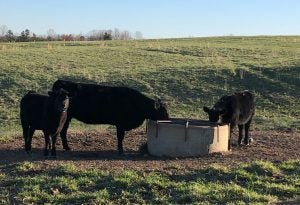Consumer buying habits have a significant impact in how much water is used in agriculture
Modern agriculture puts an enormous emphasis on efficiency — from the resources used to grow crops to the labor that’s deployed to the supply lines that help bring food from producer to consumer. Water, of course, is a crucial component in food production, and water management strategies are needed to support worldwide changes in food consumption and dietary patterns.
Agricultural production and food manufacturing account for a third of water usage in the U.S. Water helps plants grow, is needed in livestock production, and is used in washing, sanitizing, and otherwise processing much of the things we eat in the U.S. Water use fluctuates with weather patterns but is also affected by shifts in production technology, supply-chain linkages, and domestic and foreign consumer demand.
A comprehensive University of Illinois study looked at water withdrawals in U.S. agriculture and food production from 1995 to 2010. The main trend was a decline in water use, driven by a combination of factors.
“Overall, the use of water for irrigation decreased by 8.3 percent over this period,” says Sandy Dall’erba, regional economist at U of I and co-author on the study.
“However, one needs to identify the drivers of water use by crop as they differ from one commodity to the next, so water-saving strategies for one crop may not be relevant for another one,” Dall’erba explains. “For instance, water use in cereal grains, fruits, and vegetables is mostly driven by the efficiency of the irrigation system, domestic per-capita income, and sales to the food processing industry. If irrigation is more efficient, water demand decreases. When demand for fruits and vegetables decreased in 2005 to 2010 during the financial crisis, so did demand for water.”
Oilseed crops, on the other hand, have experienced a 98 percent increase in water demand over the period. The change is primarily driven by international supply-chain linkages. It means foreign companies, mostly in China, have purchased large amount of U.S. oilseed crops for further processing.
“There has also been a shift in consumer demand from red meat to white meat in the U.S. People consume less beef and more chicken, which require 3.5 times less water per pound of production. Those trends in consumption and taste have helped the U.S. reduce water use for livestock by 14 percent,” Dall’erba says.
Water management strategies may include farm-level efforts such as increasing efficiency of the irrigation system, switching crops, and growing genetically modified crops.
Other measures may include policies aimed at affecting consumer behavior such as increasing taxes on water-intensive products and supporting ecolabeling, Dall’erba suggests.

Dall’erba and co-author Andre Avelino performed a structural decomposition analysis, looking at 18 factors that drive U.S. water withdrawals across eight crops, six livestock categories, and 11 food manufacturing industries.
Based on data from Exiobase, a global supply-chain database, their analysis included water that’s embedded into the production at all stages of the domestic and international supply chain, from crops and livestock to processed food production – highlighting the interconnectedness of global agribusiness.
For example, crops produced in the U.S. may rely on fertilizers produced in a different country. Similarly, soybeans produced in the U.S. could be used for food processing in China, or to feed livestock in Europe.
The U.S.-China trade war is likely to affect these these supply-chain linkages, as Chinese import of oilseeds shifts to South America and Europe. The U.S. exported less soybean and pork to China over the last two years; therefore, less water was embedded into those exports. However, the next few years under a new U.S. administration may see an improvement in these relationships, Dall’erba notes.


